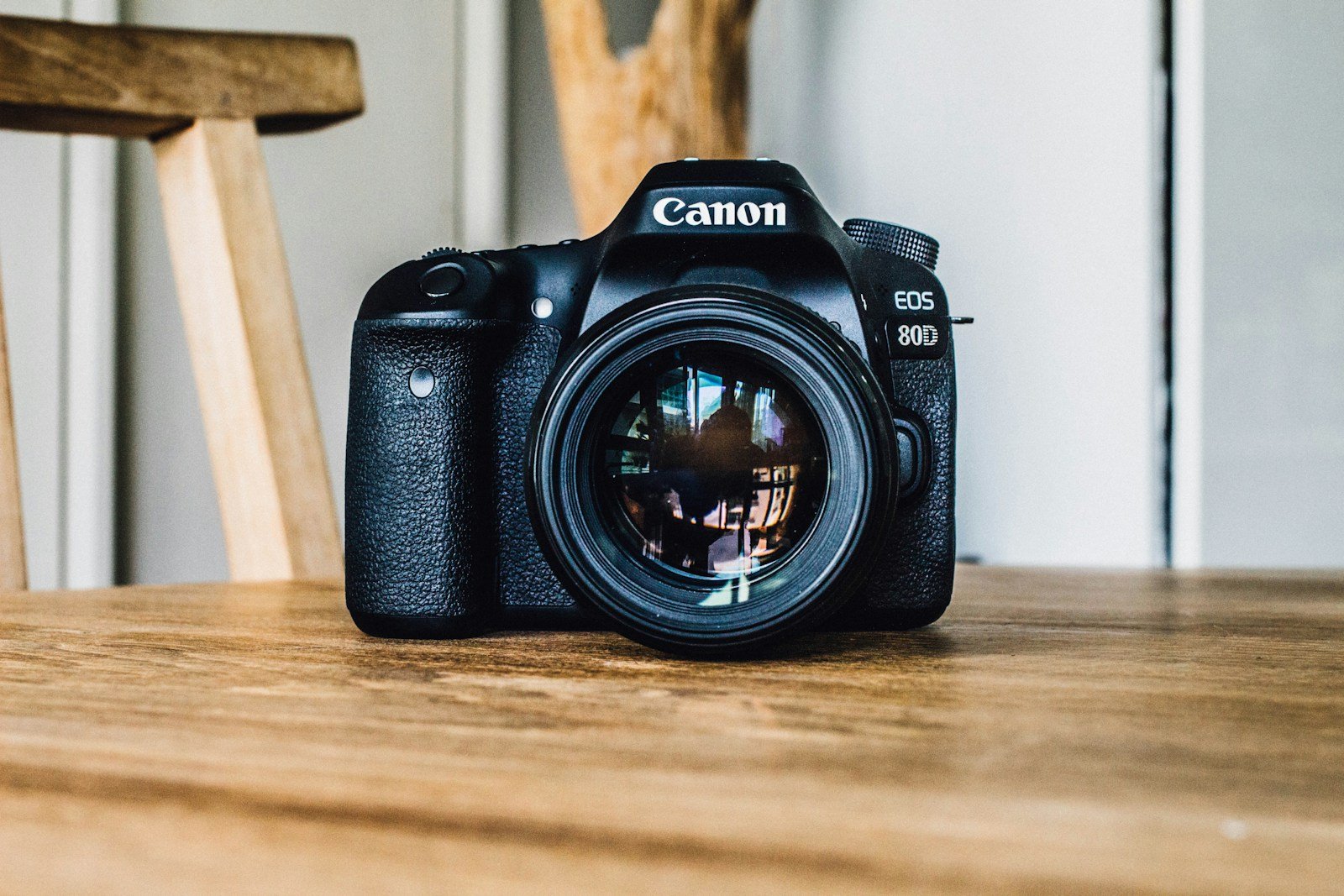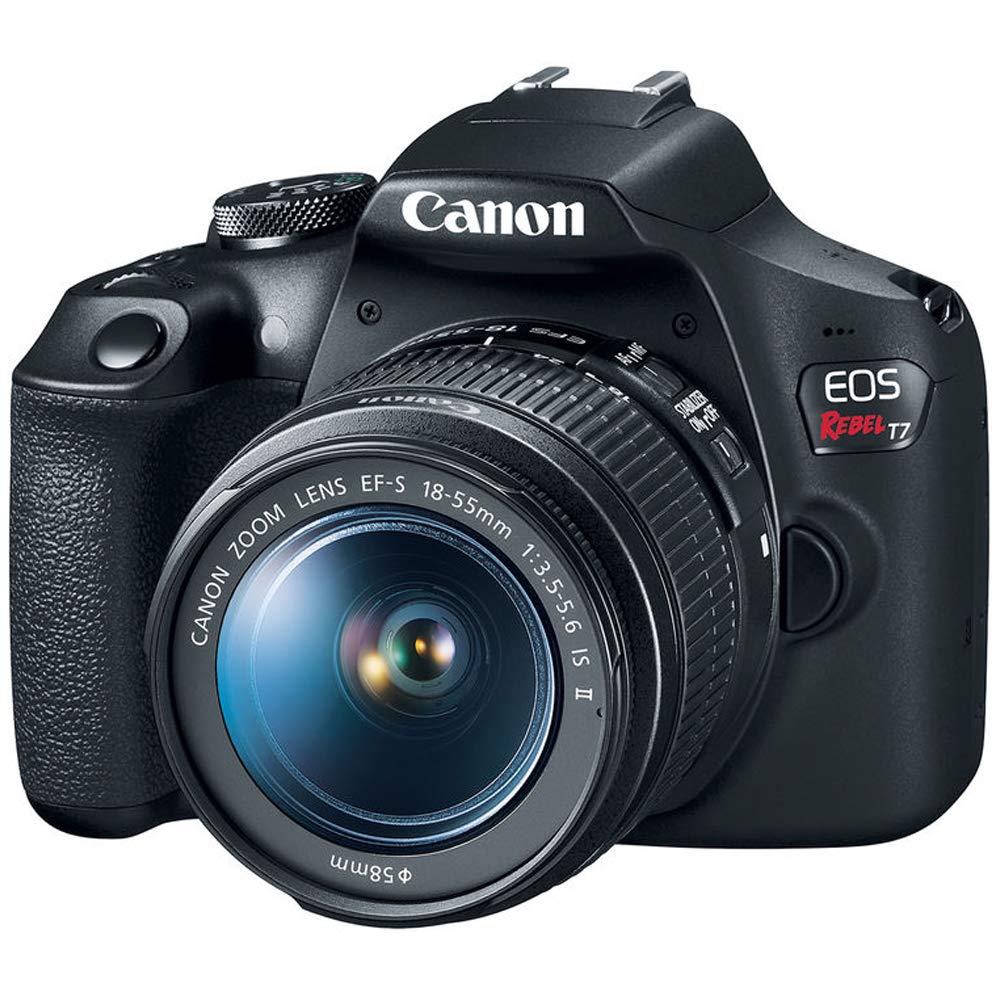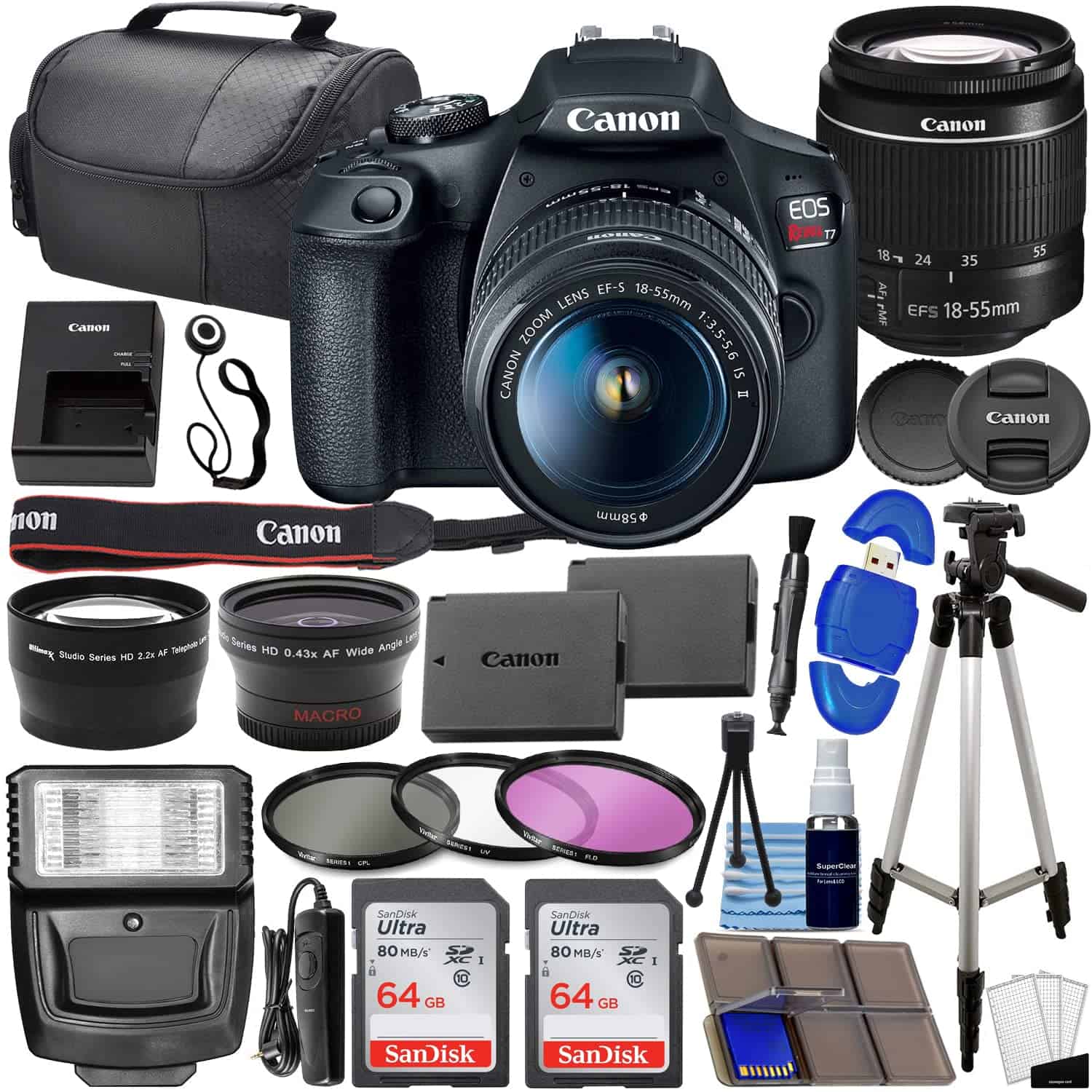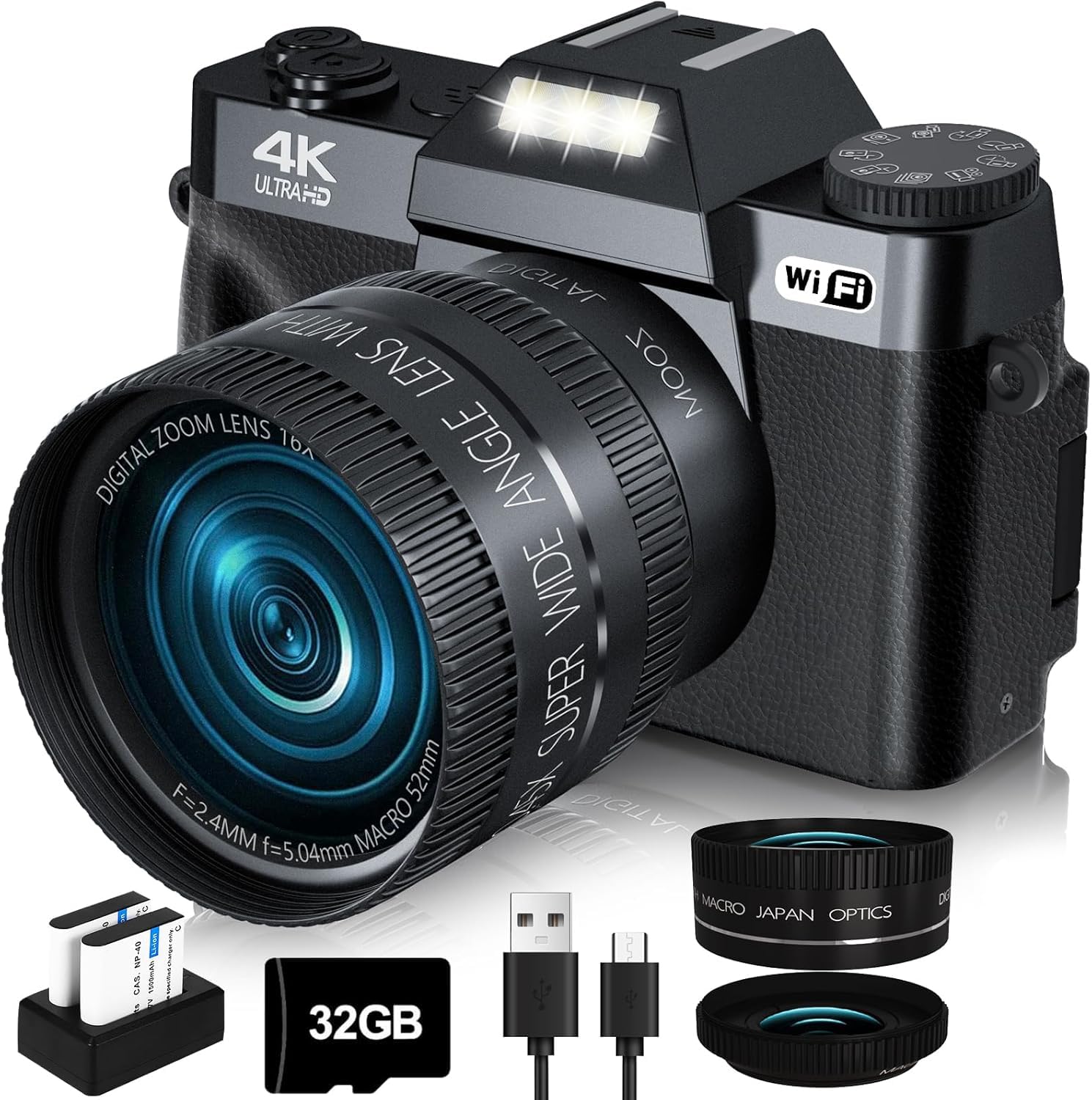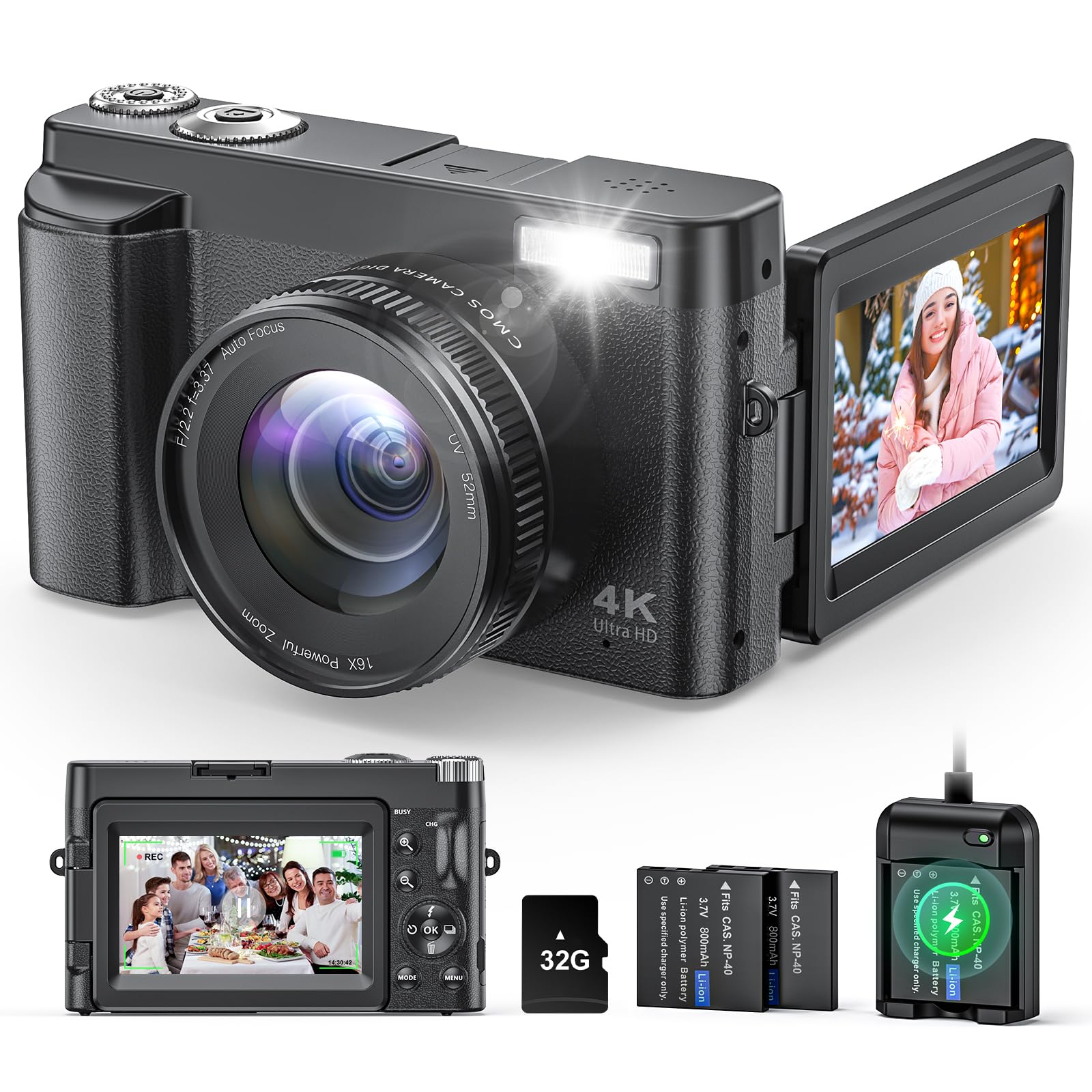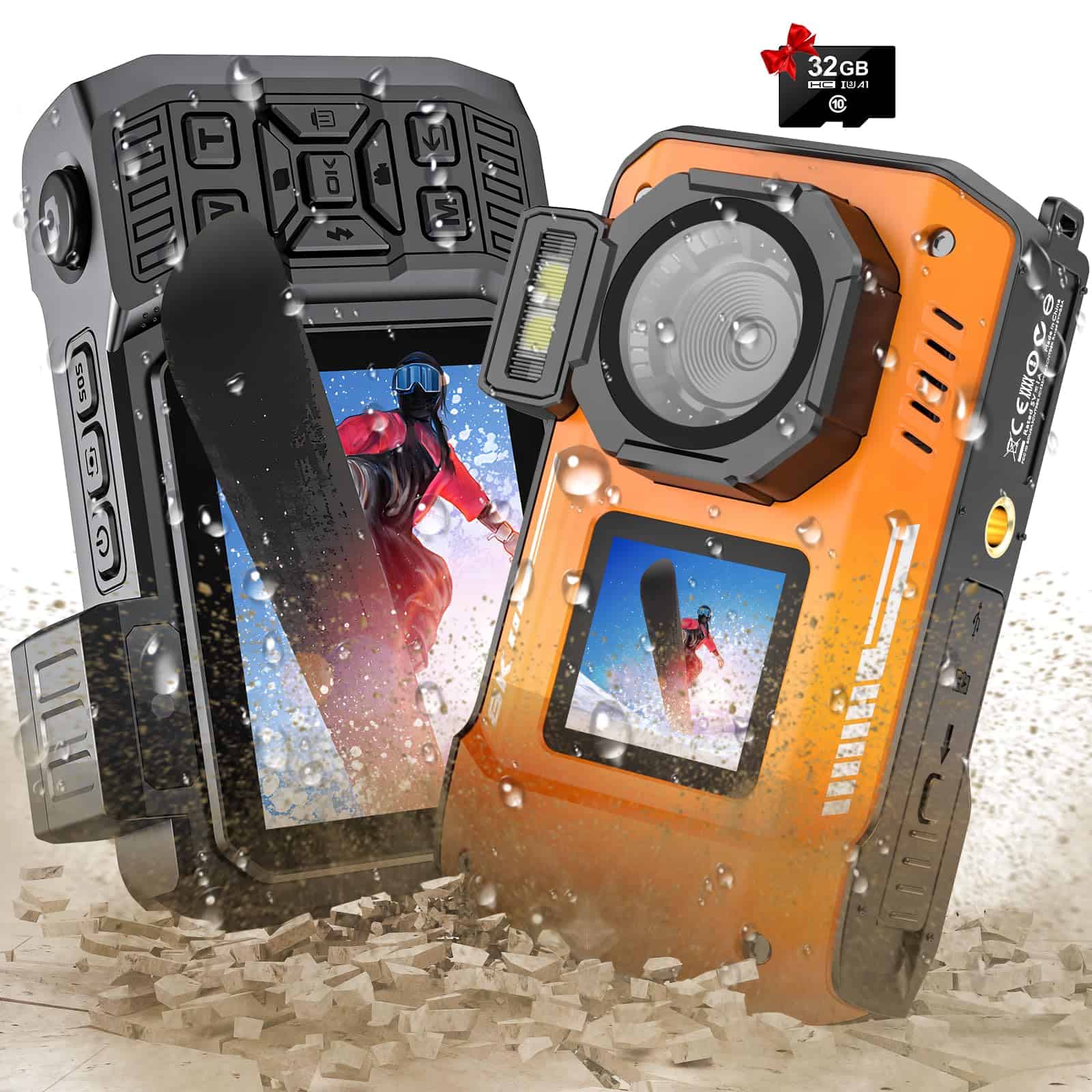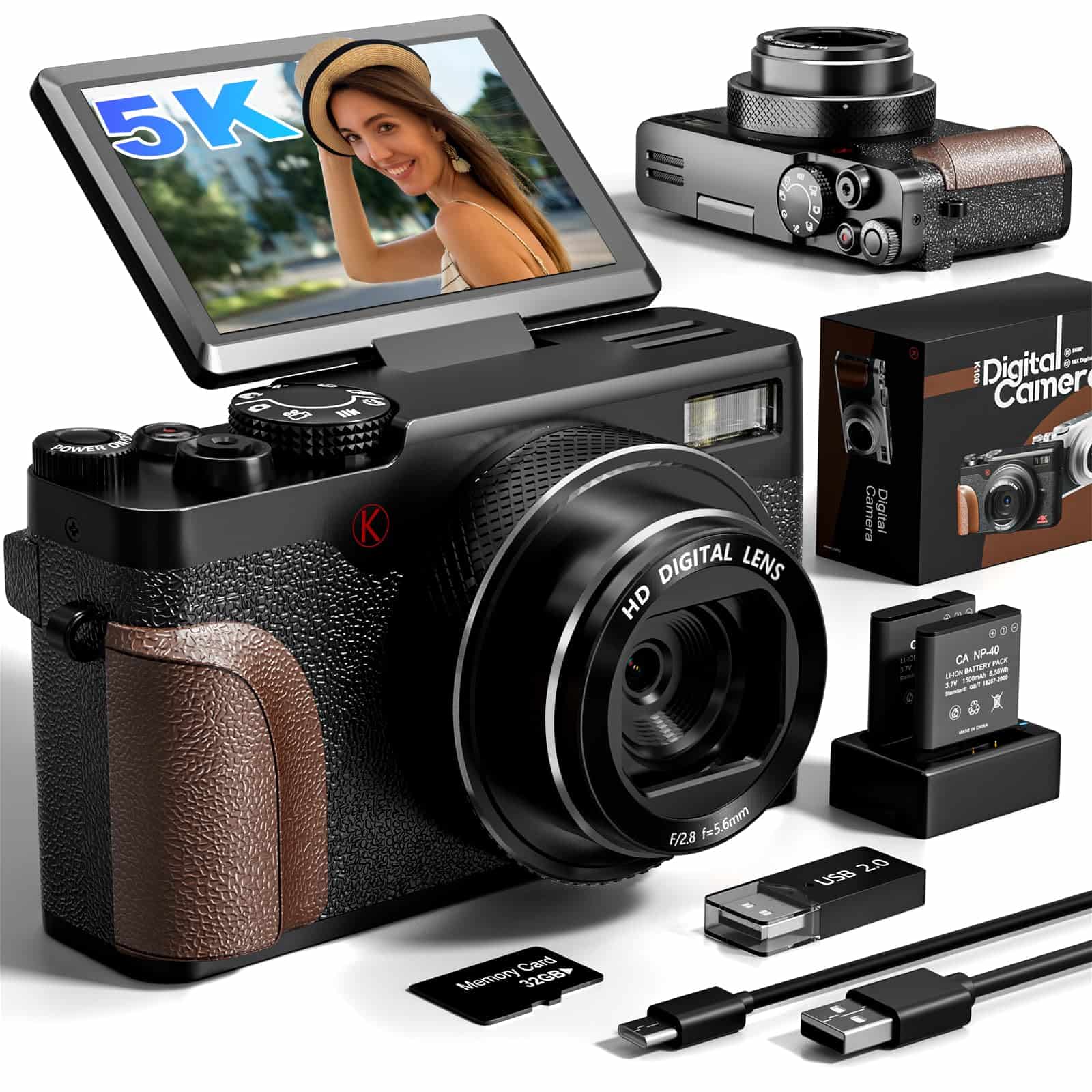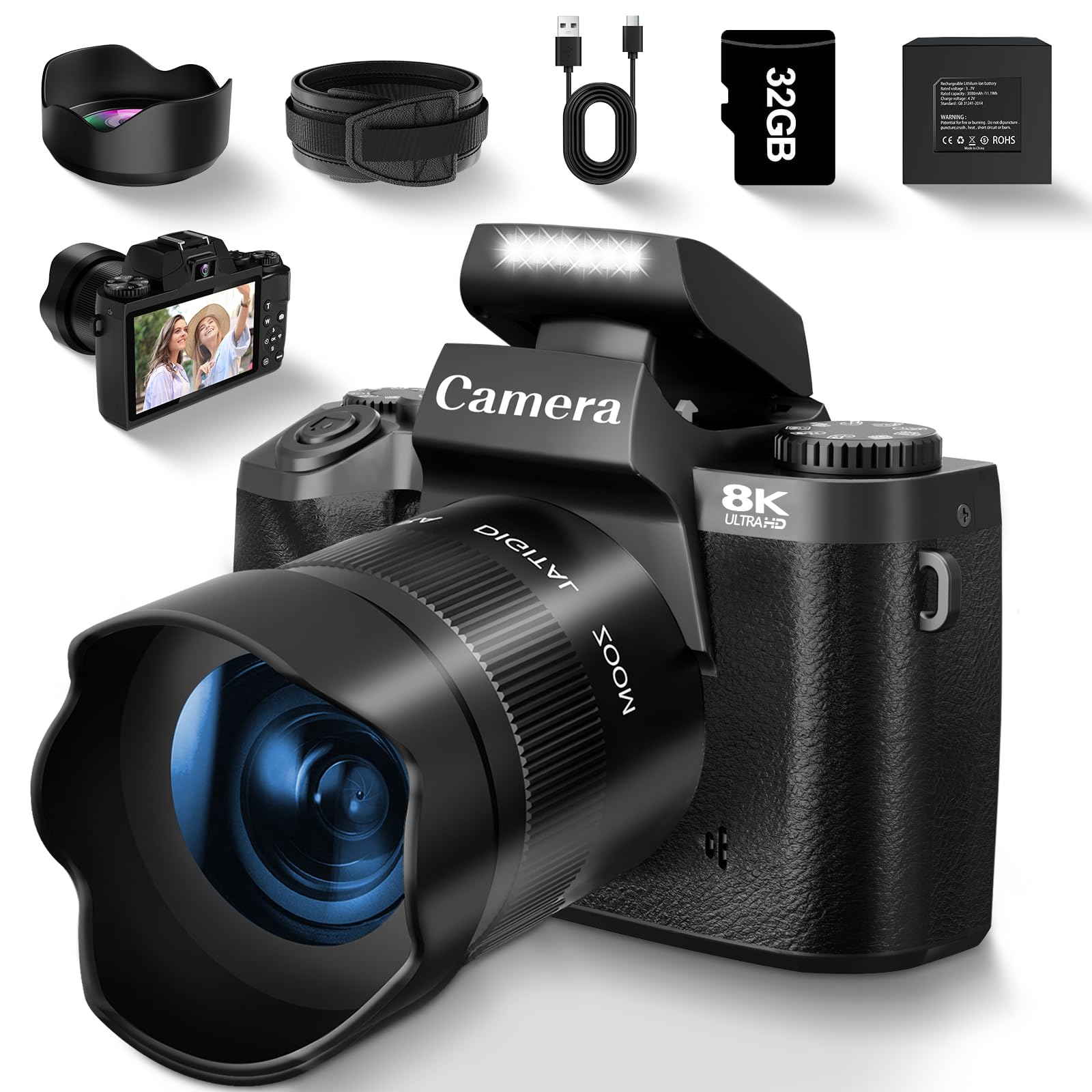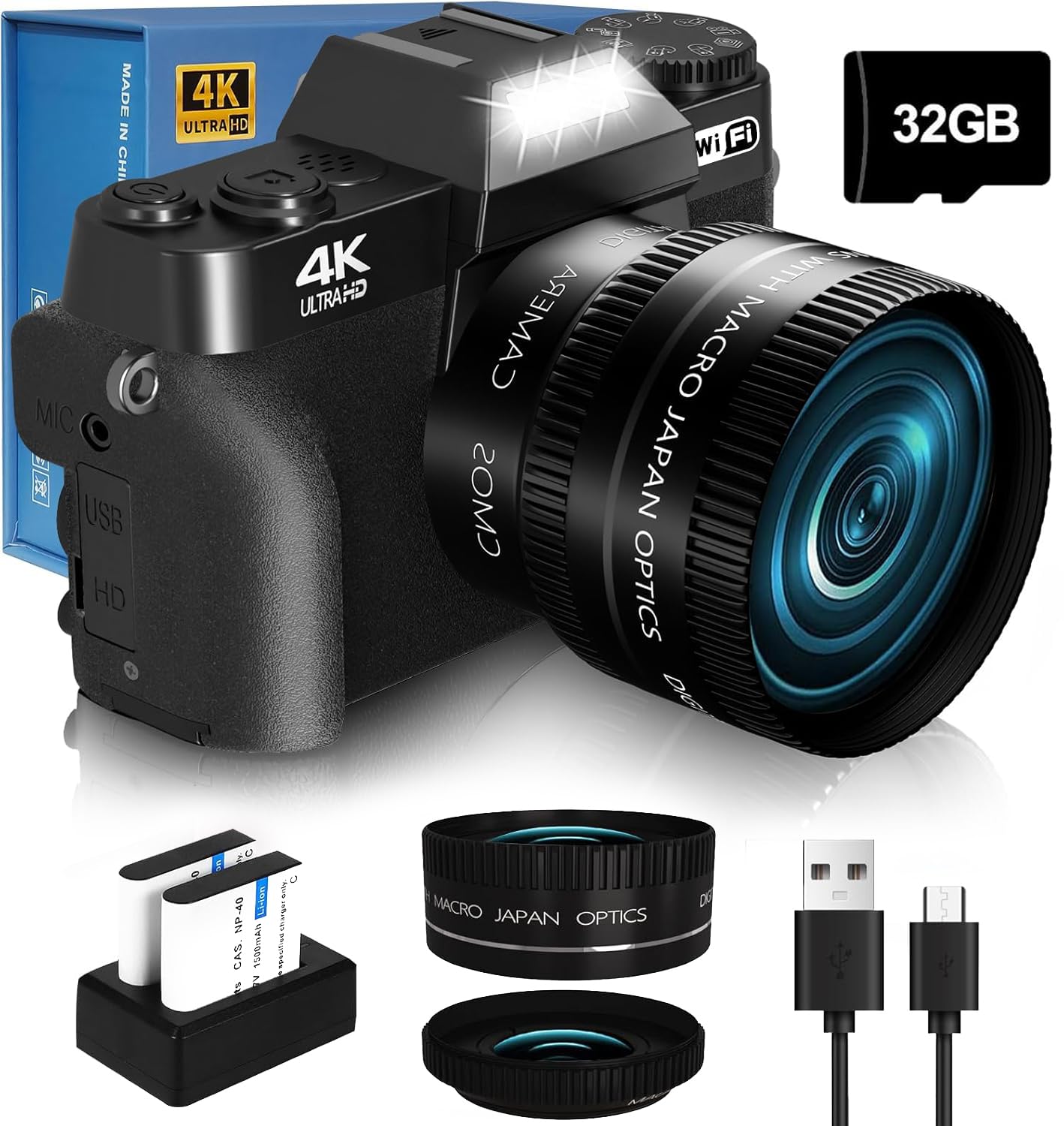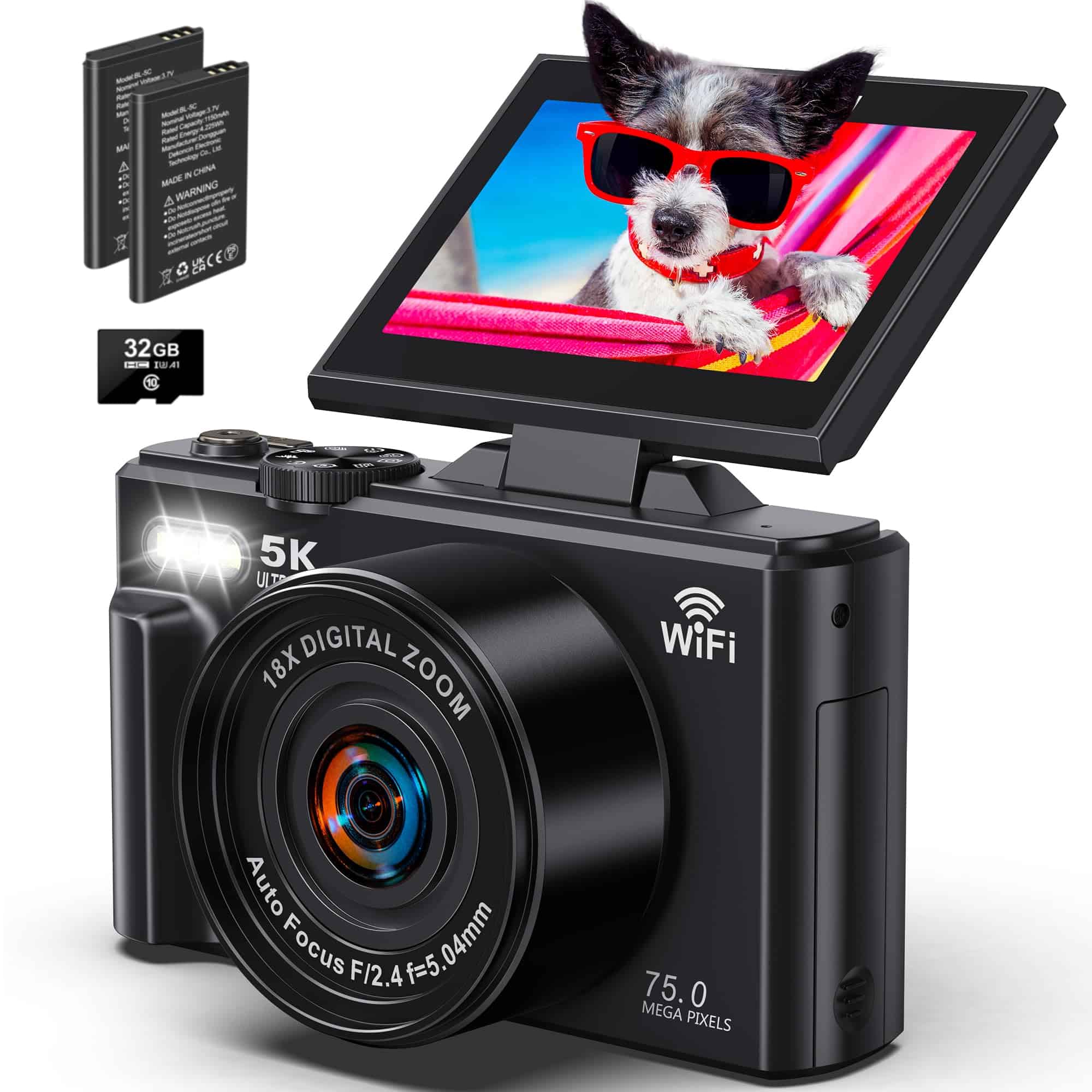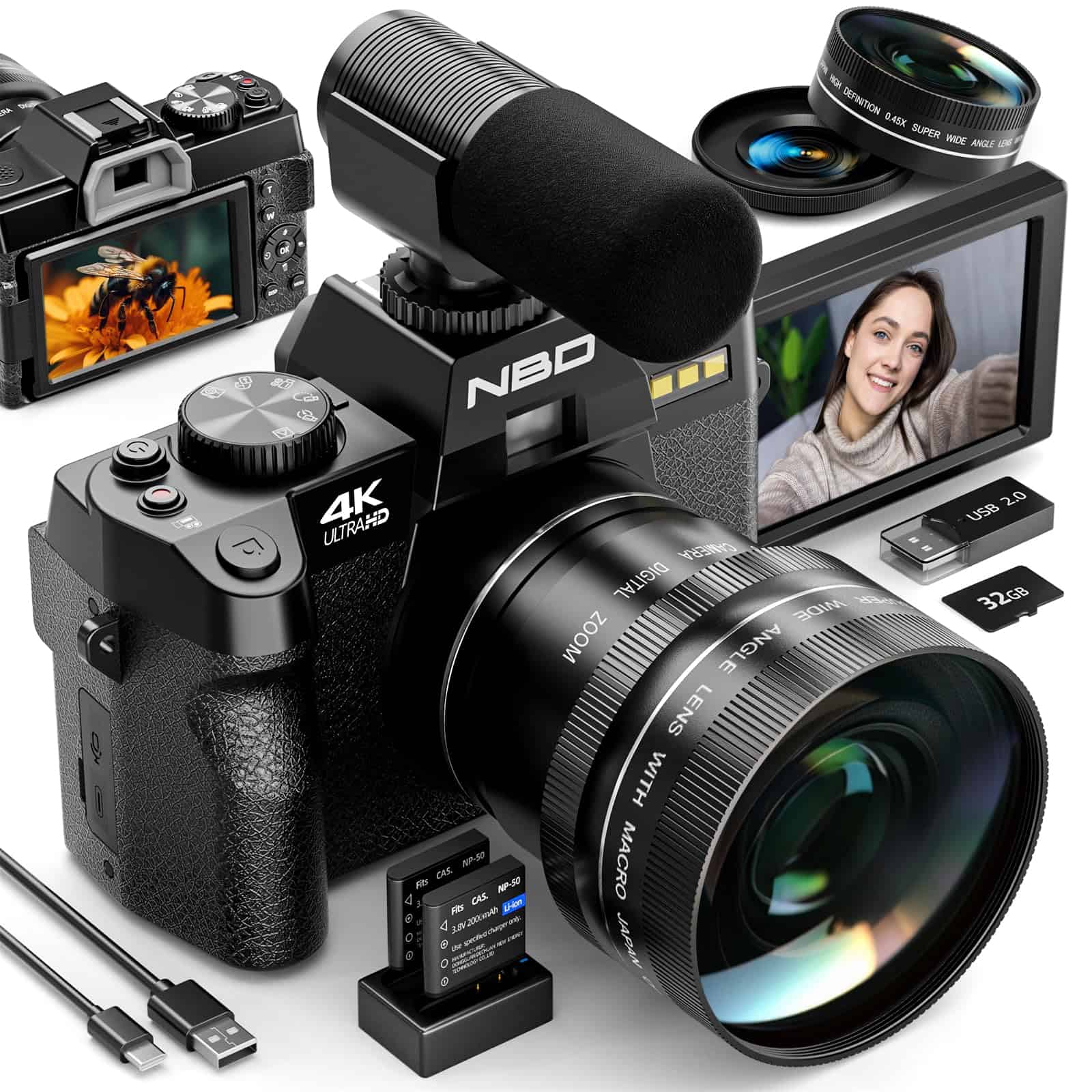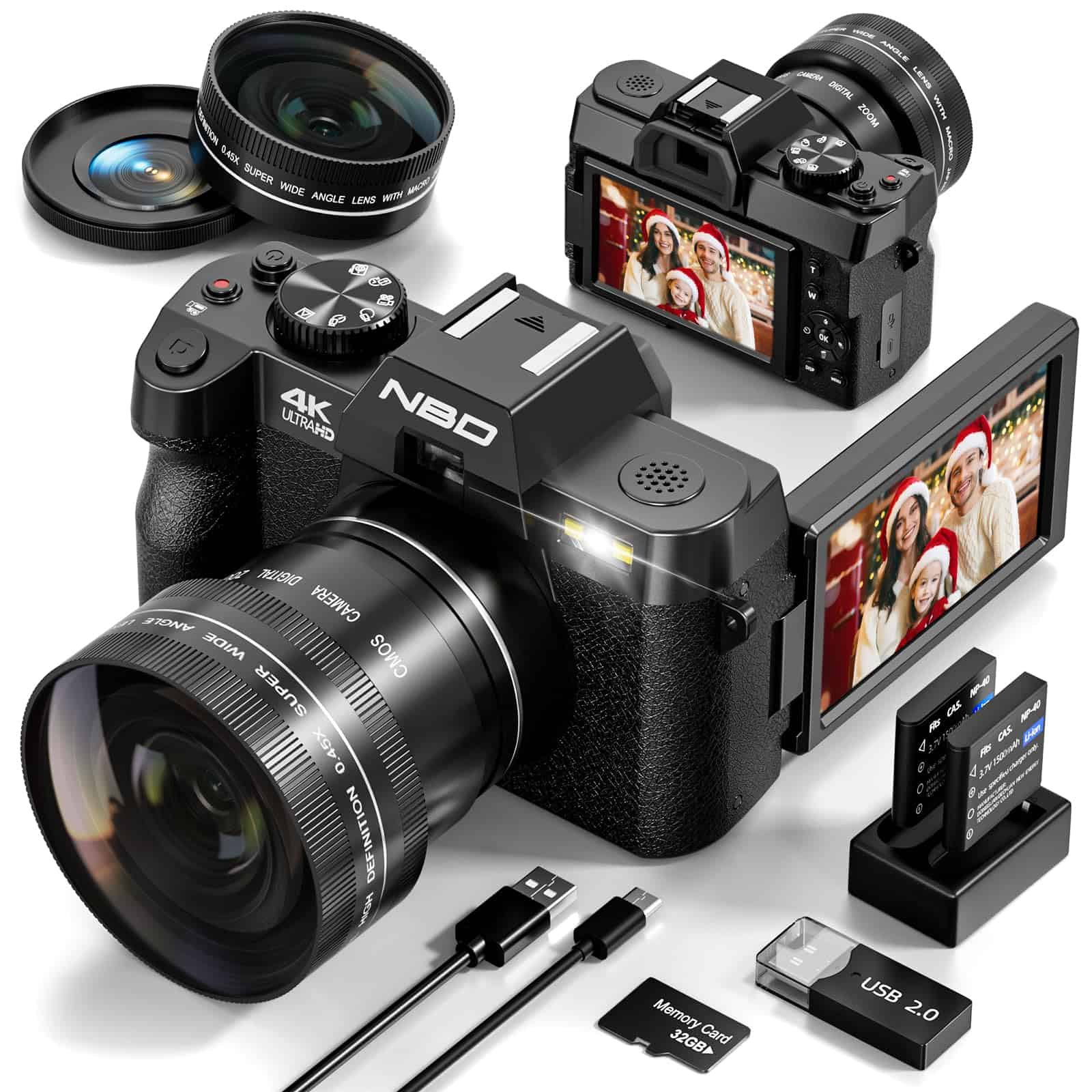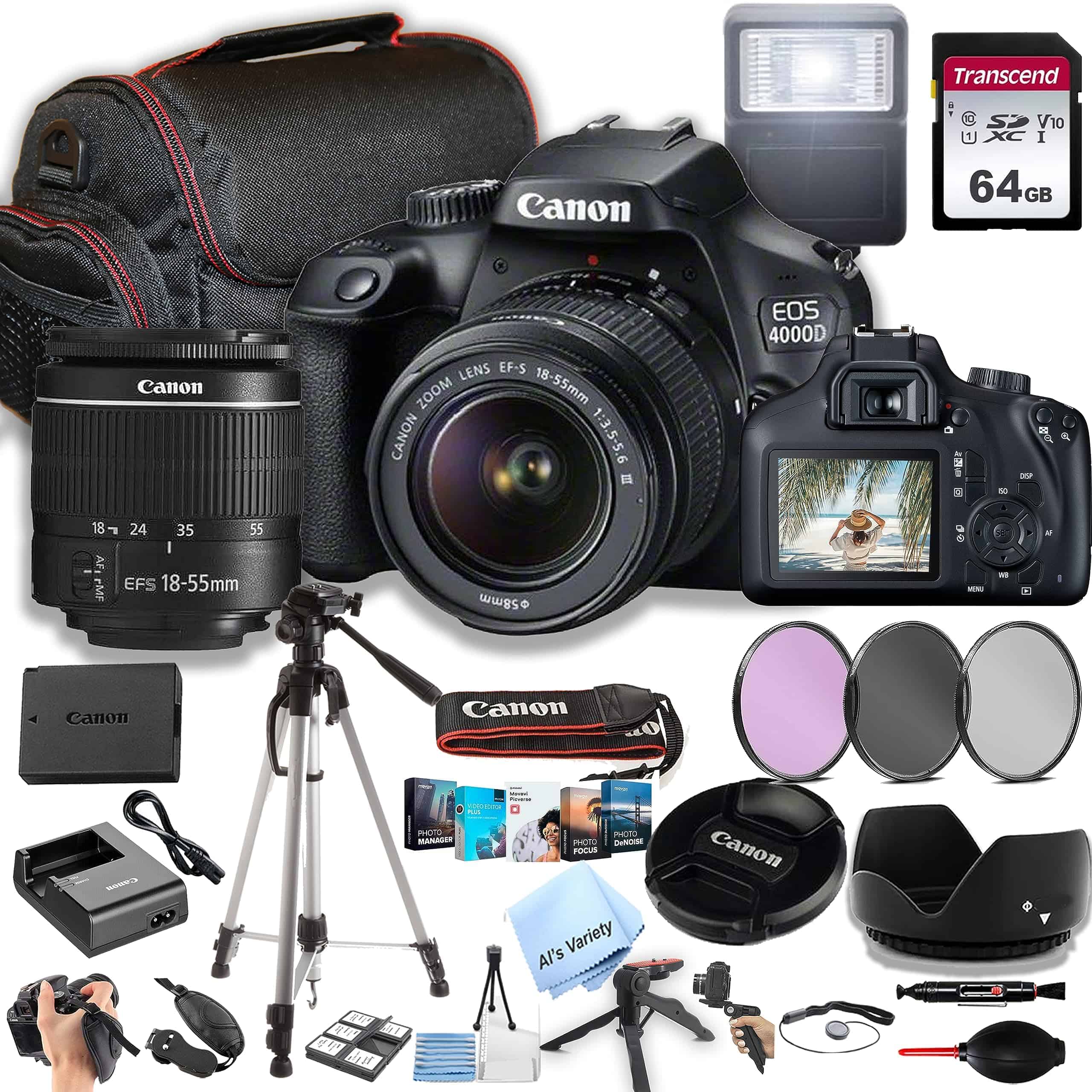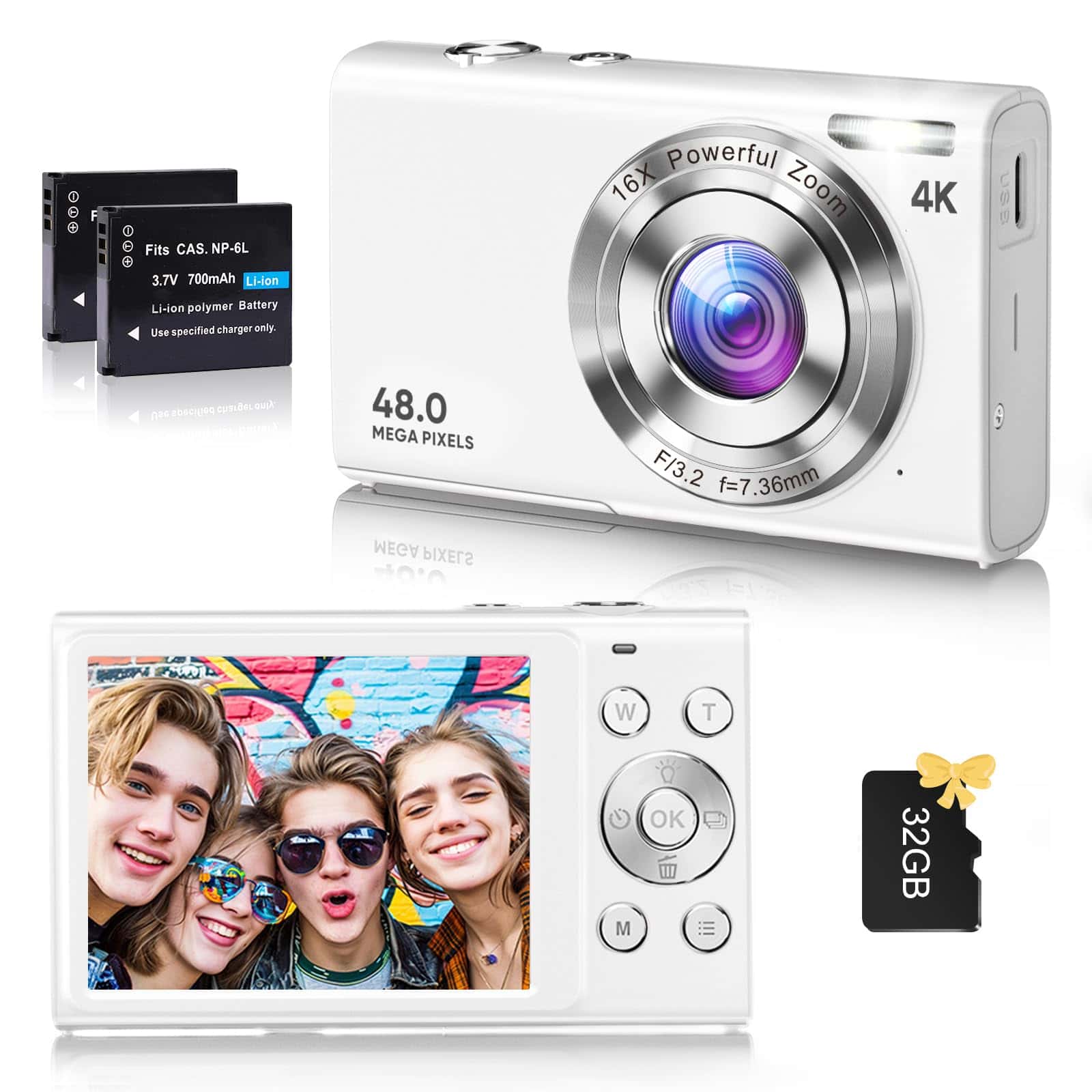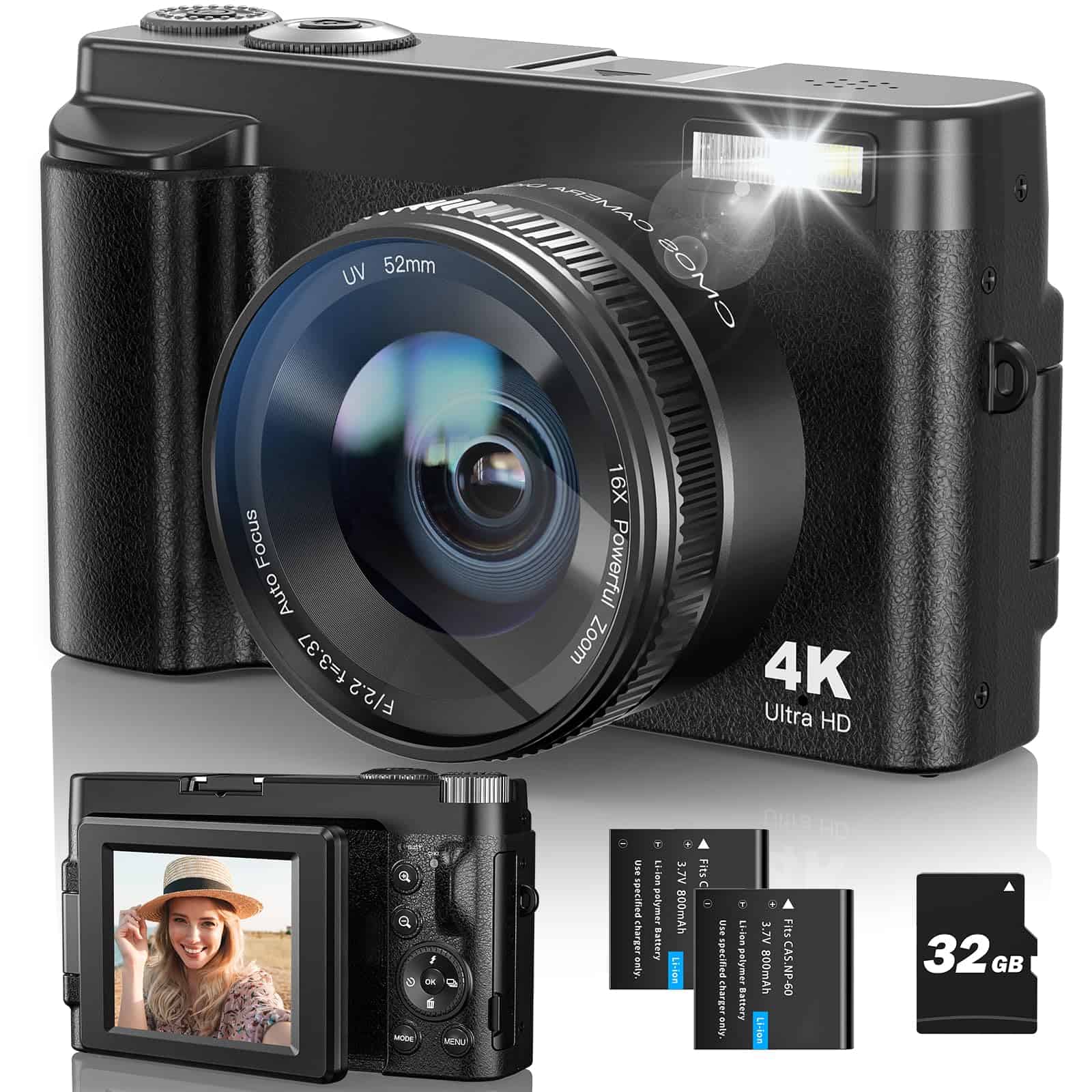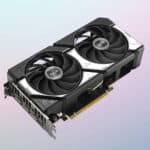Landscape photography lets us capture the beauty of nature in stunning images. Finding the right camera makes all the difference in how these photos turn out. A good landscape camera needs to handle different lighting, weather, and settings while still taking clear, detailed pictures.
We know that landscape photography often means hiking to remote locations. This makes weight and durability important factors when choosing a camera. The sensor size also matters a lot. Larger sensors capture more light and detail, which helps when shooting wide open spaces with changing light conditions.
Resolution and dynamic range are key features to look for in landscape cameras. Higher resolution means more detail in your images. Good dynamic range helps capture both bright skies and dark shadows in one shot. We spent weeks testing multiple cameras in various outdoor settings to find the best options for landscape photography enthusiasts.
Best Landscape Photography Cameras
We’ve tested dozens of cameras to find the top options for landscape photography. Our list includes a mix of DSLR and mirrorless models that excel in capturing wide vistas, dramatic skies, and subtle natural details. These cameras offer excellent resolution, weather sealing, and dynamic range to help you capture stunning outdoor scenes.
Canon EOS Rebel T7
The Canon EOS Rebel T7 is a fantastic starter DSLR for landscape photographers who want quality images without breaking the bank.
Pros
- Impressive 24.1MP sensor captures detailed landscape shots
- Built-in Wi-Fi makes sharing outdoor photos simple
- Good low-light performance for sunset landscapes
Cons
- Fixed screen limits flexibility for tricky landscape angles
- Slower continuous shooting at 3fps may miss some action
- Battery life could be better for all-day outdoor shoots
We recently took the Canon Rebel T7 on a hiking trip, and it performed remarkably well. The 24.1 megapixel CMOS sensor captured stunning details in mountain vistas that we simply couldn’t get with a smartphone. Even when the light started to fade, the ISO range of 100-6400 helped us get clean shots of the sunset.
The included 18-55mm lens is perfect for landscape beginners. It’s wide enough for sweeping views but can also zoom in on interesting features. The image stabilization helped keep our shots crisp despite some windy conditions on the ridgeline. We found the optical viewfinder worked better than the screen in bright sunlight.
Setting up the camera for landscape shots was simple with the dedicated landscape mode. The built-in Wi-Fi let us transfer photos to our phones right on the trail and share them instantly. At just one pound, this camera didn’t weigh us down during our eight-mile hike. For the price, we think this is an excellent entry point into landscape photography that produces results you’ll be proud to print.
Canon Rebel T7 Camera Bundle
This affordable DSLR bundle offers excellent image quality and versatility, making it a great choice for beginning landscape photographers.
Pros
- Excellent 24.1MP sensor captures detailed landscape shots
- Complete bundle includes everything needed to start shooting
- User-friendly interface perfect for beginners
Cons
- Limited continuous shooting speed (3 fps)
- Basic autofocus system with only 9 points
- Battery life could be better for long hiking trips
We recently tested the Canon Rebel T7 bundle in various outdoor settings, and it impressed us with its landscape photography capabilities. The 24.1MP APS-C sensor captures stunning details in mountain vistas and coastal scenes, while the included 18-55mm lens proved versatile enough for most landscape situations. The camera feels solid in hand without weighing down our backpack during long hikes.
The bundle’s additional wide-angle lens became our go-to for expansive scenes. It helped capture those breathtaking mountain ranges and vast open spaces that standard lenses struggle with. When we needed to zoom in on distant details, the included telephoto lens performed admirably. The tripod also came in handy for long-exposure shots of flowing water and sunset scenes.
Image quality stands out even in challenging lighting conditions. We shot through golden hour into dusk and were pleased with how the camera handled shadows and highlights. For beginners stepping into landscape photography, this bundle offers tremendous value. The included memory cards, filters, and carrying case meant we had everything needed right out of the box. While more advanced photographers might eventually outgrow some features, this Canon kit provides an excellent entry point into the world of landscape photography.
VJIANGER 4K Digital Camera
The VJIANGER 4K camera offers decent landscape photography capabilities at a budget-friendly price point, making it suitable for beginners who want to explore outdoor photography without breaking the bank.
Pros
- Lightweight and portable for hiking and outdoor use
- Includes wide-angle lens attachment for capturing broad landscapes
- WiFi connectivity for quick sharing of landscape shots
Cons
- Limited manual controls compared to dedicated landscape cameras
- Digital zoom reduces image quality in distant shots
- Battery life may not last for full-day landscape excursions
We recently took this camera on a weekend hiking trip to test its landscape photography abilities. The compact size made it easy to carry, weighing just over half a pound. For beginners looking to capture nature scenes, this camera fits comfortably in a pocket or small bag.
The 52mm wide-angle lens attachment proved useful for capturing expansive vistas. During our tests, we were surprised by how much scenery we could fit in one frame. The 4K video function also worked well for capturing flowing water and moving clouds, giving our landscape videos a professional look despite the camera’s budget price.
The manual focus feature helps when shooting specific elements in a landscape. We found it particularly useful for focusing on foreground elements like flowers while keeping mountains sharp in the background. The WiFi connectivity also came in handy for transferring images to our phones when we wanted to share sunset shots quickly.
Image quality is decent in good lighting conditions. Colors appear natural, though the dynamic range isn’t comparable to higher-end cameras. The included SD card provides enough storage for a full day of shooting, which we appreciated during our long hikes.
Panasonic LUMIX FZ80D
The LUMIX FZ80D is an excellent choice for landscape photographers who need incredible zoom range and 4K capabilities in a compact, easy-to-use package.
Pros
- Impressive 60x zoom range (20-1200mm) perfect for wide landscapes and distant details
- Clear electronic viewfinder works well even in bright sunlight
- Effective image stabilization keeps shots sharp even at full zoom
Cons
- Somewhat bulky compared to pocket point-and-shoots
- Battery life could be better for all-day shooting trips
- Low-light performance limited by smaller sensor size
We recently took the Panasonic LUMIX FZ80D on a weekend photography trip to test its landscape capabilities. The 20mm wide-angle setting captured breathtaking mountain vistas with excellent clarity and detail. What impressed us most was how much sky and foreground we could include in a single shot without distortion.
The 60x zoom let us frame distant features that would be impossible with standard lenses. We zoomed in on a waterfall nearly a mile away with surprising clarity. The POWER O.I.S. stabilization system works wonders – our handheld shots at full zoom remained crisp without a tripod. This feature alone makes the camera worth considering for landscape photographers who often shoot in challenging conditions.
The electronic viewfinder deserves special mention. Unlike many cameras in this price range, the FZ80D’s viewfinder remains visible and useful even in bright sunlight. We found it easy to compose shots and check settings without squinting or seeking shade. The 4K video and photo modes add versatility, letting us extract perfect 8MP stills from video sequences – particularly useful for capturing changing light conditions over landscapes.
Build quality feels solid in hand without being too heavy for all-day carrying. While not pocket-sized, it’s much lighter than a DSLR with multiple lenses. The touchscreen interface makes focusing and reviewing images simple, though menus can take some time to learn. For landscape photographers who want versatility without breaking the bank, this camera offers tremendous value.
Zostuic 4K Digital Camera
This budget-friendly 4K camera offers impressive features for beginners looking to capture beautiful landscape photography without spending a fortune.
Pros
- Excellent 48MP resolution with 16x zoom for distant landscapes
- Lightweight design makes it perfect for long hikes
- Built-in flash helps in low-light conditions
Cons
- Digital stabilization isn’t as effective as optical
- Battery life could be better for all-day shoots
- Limited lens options compared to DSLRs
We recently took the Zostuic 4K camera on a weekend hiking trip to test its landscape photography capabilities. The compact size was immediately noticeable – weighing just 0.59 pounds, it didn’t add much bulk to our backpack. This is a huge plus when trekking to remote locations for the perfect landscape shot.
The 48MP resolution surprised us for a camera in this price range. Landscape details were crisp, and the 16x zoom let us capture distant mountains with good clarity. We found the autofocus works well in good lighting, though it sometimes struggled in more challenging conditions. The 3-inch flip screen was helpful when shooting from awkward angles, like getting low to the ground for interesting foreground elements.
Battery life is decent with the included two 800mAh batteries, but we’d recommend bringing both for a full day of shooting. The built-in flash came in handy for evening landscape shots. While serious photographers might want more advanced features, this camera hits a sweet spot for beginners or casual photographers who want quality landscape images without the complexity or cost of professional equipment. The 32GB card that comes with it is enough to get started, but you’ll likely want more storage for longer trips.
Tupsio 8K Underwater Camera
This rugged underwater camera offers impressive specs for landscape photographers who want durability and high resolution without breaking the bank.
Pros
- Waterproof up to 33ft with shockproof design
- High 70MP photo resolution with 8K video
- Comes with 32GB card and long-lasting battery
Cons
- Digital zoom only (no optical zoom)
- Limited low-light performance
- Manual controls could be more extensive
We recently took this Tupsio camera on a mountain hiking trip and were amazed by its performance. The sturdy build held up perfectly against dust and occasional drops on rocky terrain. Its compact size made it easy to pull out quickly when we spotted stunning vistas without weighing down our gear.
The 70MP resolution captured remarkable detail in landscape shots. Mountain ranges that stretched into the distance showed impressive clarity even when we cropped in later. The 4:3 aspect ratio on both screens (2.88″ front and 1.44″ rear) gave us a better framing experience than typical 16:9 displays when shooting wide landscapes.
Battery life proved solid during our testing. The 2500mAh battery lasted through a full day of shooting with mixed photo and video use. We appreciate that it comes with a 32GB card to get started right away. The autofocus worked well for most landscape scenes, though it occasionally hunted in low contrast situations. For such an affordable camera, the image quality in good lighting conditions exceeded our expectations.
G-Anica 64MP Camera
The G-Anica 64MP is a surprisingly capable budget camera that delivers excellent landscape photography results without breaking the bank.
Pros
- Lightweight design perfect for hiking and outdoor adventures
- Impressive 64MP resolution captures fine landscape details
- Long battery life with two included batteries
Cons
- Limited optical zoom capabilities
- Basic manual controls may frustrate advanced photographers
- Lower low-light performance compared to premium models
We took the G-Anica camera on our recent mountain trek, and it performed better than expected. The 64MP sensor captured stunning details in vast landscapes, showing off tiny trees and rock formations that would be lost with lesser cameras. It’s very light at just 280g, making it easy to carry during long hikes.
The 3-inch flip screen proved useful when shooting from awkward angles. We could position the camera low to the ground for interesting foreground elements while still seeing our composition clearly. The autofocus worked well in good light, quickly finding focus points with a simple half-press of the shutter button.
Battery life surprised us most. With two batteries included, we shot all day without running out of power. The camera also comes with a 32GB SD card, so it’s ready to use right out of the box. For beginners looking to try landscape photography, this camera offers great value without overwhelming users with complex settings.
UIKICON 8K Digital Camera
We recommend this camera for beginner landscape photographers looking for a feature-packed option at an affordable price point.
Pros
- Excellent 64MP resolution captures detailed landscape shots
- Long-lasting 3000mAh battery perfect for extended outdoor shoots
- Large 4-inch touchscreen makes navigating settings easy
Cons
- 16x digital zoom (not optical) reduces quality when zooming
- Build quality feels less robust than professional cameras
- Limited low-light performance compared to DSLR options
Taking this camera on our latest mountain hike showed its true potential for landscape photography. The 64MP sensor really shines when capturing wide vistas, bringing out small details in distant mountains and valleys. We found the colors to be vibrant and true-to-life in good lighting conditions.
Battery life impressed us during our testing. The 3000mAh battery lasted through a full day of shooting without needing a recharge, which is essential when photographing remote landscapes. The included lens hood proved valuable for shooting into the sun during golden hour, reducing unwanted flare.
The dual-lens system gives flexibility when switching between wide landscape shots and closer details. We appreciated the WiFi capability for quick transfers to our phones while still in the field. At just 1.54 pounds, it’s light enough to carry on long hikes without causing fatigue.
Setting up and using the camera is straightforward. The touchscreen interface is responsive and makes adjusting settings quick. While it can’t match the image quality of high-end DSLRs, we found it offers remarkable value for casual landscape photographers and vloggers who want good quality without a huge investment.
NIKICAM 4K Digital Camera
This affordable 4K camera offers impressive features for beginners wanting to explore landscape photography without breaking the bank.
Pros
- Excellent value with included accessories (lens, SD card, batteries)
- User-friendly interface perfect for photography newcomers
- Lightweight and compact for easy travel
Cons
- Image quality doesn’t match higher-end cameras
- Limited manual controls for advanced techniques
- Digital zoom reduces photo quality at higher ranges
We recently took the NIKICAM 4K camera on a weekend hiking trip to test its landscape photography capabilities. The 56MP resolution captures good detail in daylight conditions, making it suitable for wide mountain vistas and scenic overlooks. Its compact size meant we could easily slip it into a jacket pocket between shots.
For beginners, this camera hits a sweet spot between price and performance. The flip screen proved useful when we needed to shoot at awkward angles to capture flowing water scenes. WiFi connectivity let us quickly transfer photos to our phones right on the trail, which was more convenient than we expected.
Battery life held up well during a full day of shooting. We appreciated having the backup battery included, though we didn’t need it until our second day out. The 32GB card provided enough storage for hundreds of shots before requiring downloads. While serious photographers will eventually want something with more manual controls, we found this NIKICAM perfect for those just starting their landscape photography journey.
Pedtail 5K Camera for Landscapes
This powerful 75MP camera offers exceptional value for landscape photographers with its 5K video capabilities, 18X zoom, and user-friendly interface.
Pros
- Stunning 75MP resolution captures incredible landscape details
- 180° flip screen helps frame difficult landscape shots
- Includes two batteries and 32GB SD card for extended outdoor shoots
Cons
- Limited optical zoom (relies on digital zoom)
- Battery life could be better for all-day landscape sessions
- Simplified controls may frustrate advanced photographers
We recently tested this Pedtail camera in the mountains, and its 75MP resolution truly impressed us. The camera captured the fine details of distant ridgelines and foliage that cheaper cameras often miss. Colors were rich and accurate, especially in the challenging lighting conditions that landscape photographers often face.
The 18X digital zoom helped us frame distant subjects without lugging heavy lenses around. While digital zoom isn’t as crisp as optical, we found it more than adequate for most landscape situations. The 3-inch flip screen proved surprisingly useful, letting us shoot from creative angles without contorting ourselves into uncomfortable positions.
Battery life is decent but not outstanding. We recommend carrying both included batteries for full-day adventures. The camera’s simple controls make it perfect for beginners, but experienced photographers might wish for more manual options. At this price point, though, we were amazed by the image quality and features packed into such a lightweight body. If you’re seeking a landscape camera that balances performance and portability, this Pedtail model deserves a serious look.
NBD 4K Camera
The NBD 4K Camera delivers exceptional landscape photography capabilities with its 48MP sensor and versatile features at a price that won’t break the bank.
Pros
- Amazing 48MP clarity with F1.8 lens captures stunning landscape details
- User-friendly controls make it perfect for beginners and experienced photographers
- Complete package includes extra battery, macro lens, and accessories
Cons
- No image stabilization may affect handheld shots
- Digital zoom (not optical) can reduce image quality at maximum range
- WiFi sharing works but can be slow with large 4K files
We took this camera on a weekend hiking trip, and the results blew us away. The 48MP sensor captured mountains and valleys with incredible detail. Colors were rich and true-to-life, even in challenging lighting conditions. The F1.8 lens let in plenty of light for sunrise shots without getting grainy.
Setting up the camera was simpler than expected. The controls are intuitive, and most settings are pre-tuned for landscape photography. We particularly liked the dedicated landscape mode, which automatically adjusts settings for wide vistas. The 3-inch flip screen helped us frame low-angle shots without lying on the ground.
Battery life surprised us during our testing. Both included batteries lasted for a full day of shooting. The 16x zoom let us capture distant features, though we noticed some quality loss at maximum zoom since it’s digital rather than optical. The included wide-angle attachment proved handy for capturing expansive scenes. For the price, this camera delivers remarkable landscape photography potential with minimal fuss.
NBDDIGITAL 48MP Camera
The NBDDIGITAL 48MP camera offers good value for beginners looking to capture landscape photography without breaking the bank.
Pros
- 4K video with 180° flip screen
- Includes wide-angle and macro lenses
- Comes with extra battery and 32GB card
Cons
- Digital zoom instead of optical zoom
- Limited in low light conditions
- Basic controls may frustrate advanced users
We tested this camera on a recent hiking trip and were surprised by its performance for the price point. The 48MP resolution captured sharp details of mountain ranges and forest scenes. Its lightweight design made it easy to carry all day without feeling burdened.
The included wide-angle lens proved especially useful for landscape shots. We could fit more of the scenery into a single frame without losing quality. The auto-focus worked well in daylight, though we noticed it struggled a bit when light levels dropped in the evening.
Battery life exceeded our expectations. With the included spare battery, we shot for nearly a full day before needing to recharge. The anti-shake feature helped when shooting handheld, though it’s not as effective as higher-end stabilization systems. For the best landscape results, we still recommend using the tripod mount with a stable base.
Setting up the camera was simple enough that we were shooting minutes after unboxing. The menus are straightforward and make sense even for first-time camera users. While serious photographers might want more manual controls, this camera hits a sweet spot for beginners who want to start capturing landscapes without the steep learning curve.
Canon Rebel T100 Camera Bundle
This budget-friendly DSLR offers impressive image quality and a complete accessory package that makes it perfect for beginners wanting to explore landscape photography.
Pros:
- Excellent image quality with 18MP sensor
- Complete bundle with useful accessories
- Built-in Wi-Fi for easy photo sharing
Cons:
- Slower autofocus than newer models
- Limited low-light performance
- LCD screen is smaller than competitors
We recently tested the Canon Rebel T100 (also known as EOS 4000D) in the field, and it proved to be a solid entry-level camera for landscape photography. The 18MP sensor captures surprisingly detailed images with natural colors that really bring outdoor scenes to life. When shooting mountains at sunset, we noticed good dynamic range that preserved both shadow and highlight details.
The included 18-55mm kit lens offers a versatile focal range for landscape work. We found it sharp enough for most situations, especially when stopped down to f/8-11, which is ideal for maximizing depth of field in landscape shots. The optical viewfinder gives a clear view of your composition, and we appreciated this traditional approach when shooting in bright sunlight where LCD screens typically struggle.
What makes this package stand out is the extensive accessory bundle. The included tripod came in handy for long-exposure waterfall shots, while the UV filter protected the lens during a light drizzle. The 64GB memory card provided plenty of storage for a full day of shooting. Wi-Fi connectivity made it easy to transfer images to our phone for quick social media sharing right from the trail. For beginners wanting to explore landscape photography without breaking the bank, this Canon bundle offers tremendous value.
FJFJOPK 4K Digital Camera
This compact 48MP camera offers impressive landscape photography features at a budget-friendly price that’s perfect for beginners and casual photographers.
Pros
- Outstanding 48MP images with 4K video capability
- Lightweight, pocket-sized design with intuitive controls
- Includes 32GB memory card and two batteries
Cons
- Digital zoom (not optical) limits distant shots
- Limited low-light performance
- Not weatherproof for harsh conditions
We recently tested the FJFJOPK 4K Digital Camera in various landscape settings, and it performed surprisingly well for its price point. The 48MP resolution captures impressive detail in daylight conditions, making it ideal for sweeping vistas and nature scenes. Its compact size meant we could easily slip it into a pocket during hikes without feeling weighed down.
The camera’s autofocus system works efficiently when shooting landscapes. We found the dedicated landscape mode particularly useful, automatically adjusting settings to capture sharper horizons and vibrant skies. The anti-shake feature helped tremendously when shooting handheld in breezy conditions on mountaintops.
Battery life exceeded our expectations during testing. With two included batteries, we captured over 200 photos and several short 4K videos during a full day of shooting. The 16x digital zoom works adequately for distant subjects, though as expected, image quality decreases at maximum zoom. For beginners looking to explore landscape photography without breaking the bank, this camera strikes a good balance between features and affordability.
Fulealfly 4K Landscape Camera
The Fulealfly 4K camera offers impressive landscape photography capabilities with its 48MP sensor and 16x zoom at a budget-friendly price point that makes it perfect for beginners or as a travel backup.
Pros
- Lightweight (0.6 lbs) and compact for easy hiking and travel
- 48MP sensor captures detailed landscape shots
- Comes with two batteries and a 32GB memory card
Cons
- Digital zoom rather than optical zoom reduces far-away image quality
- Limited manual controls for advanced photographers
- Not weather-resistant for harsh outdoor conditions
We took this camera on a weekend hiking trip and were amazed by how little space it took in our pack. At just 0.6 pounds, we hardly noticed it was there until we reached a stunning vista and needed to capture the moment. The compact size makes it perfect for landscape photographers who need to travel light but don’t want to sacrifice image quality.
The 48MP sensor surprised us with its ability to capture fine details in mountain ranges and forest scenes. Colors came out natural and vivid, especially in good lighting conditions. When we tested the 16x zoom to capture distant waterfalls, we did notice some quality loss since it’s digital rather than optical zoom, but for sharing photos online, the results were more than acceptable.
Battery life exceeded our expectations during our landscape photography sessions. The two included batteries got us through a full day of shooting without needing to recharge. We particularly liked the flip screen for those low-angle landscape shots where we wanted to include foreground elements without having to lie on wet ground. While it lacks weather sealing for extreme conditions, the camera performed well in light mist and moderate temperatures that most casual landscape photographers would encounter.
KODAK PIXPRO AZ405 Camera
The KODAK PIXPRO AZ405 offers remarkable zoom capabilities and user-friendly features at an affordable price, making it an excellent choice for beginner landscape photographers.
Pros
- Impressive 40X optical zoom with image stabilization
- Simple controls perfect for beginners
- Uses standard AA batteries instead of proprietary ones
Cons
- Focus can be inconsistent in some lighting conditions
- LCD screen hard to see in bright sunlight
- Battery life drains quickly with heavy zoom use
We recently tested the KODAK PIXPRO AZ405 in various landscape settings, and its performance impressed us for the price point. The 40X optical zoom lets you capture distant mountains and wildlife with surprising clarity. This feature alone makes it worth considering for anyone who wants to shoot landscapes without carrying multiple lenses.
The camera feels solid in hand despite its lightweight design. Its 20-megapixel sensor captures good detail in daylight conditions, though we noticed some quality loss in low light. The optical image stabilization works well when shooting handheld at full zoom – a must-have feature for landscape photography where tripods aren’t always practical.
Battery life is decent with the included AA batteries, lasting through most of a day’s shooting. We like that you can easily find replacements anywhere, unlike cameras with proprietary batteries. The menu system is straightforward, making it easy to adjust settings quickly while out in the field. For beginners looking to explore landscape photography without breaking the bank, this camera offers a great balance of features and simplicity.
Buying Guide
Looking for a landscape photography camera can be tough. We want to help you find the right one for your needs. Here’s what to consider when shopping.
Sensor Size Matters
Larger sensors capture more light and detail. Full-frame sensors are top choice for landscape work. They provide better low-light performance and wider dynamic range.
APS-C sensors offer a good balance between quality and price. They’re lighter too, which helps on long hikes.
Resolution and Megapixels
Higher resolution lets you print larger or crop your images. For landscape photography, we recommend at least 24 megapixels.
Don’t chase megapixels blindly though. Image quality depends on more than just numbers.
Weather Sealing
Landscapes mean outdoor shooting in all conditions. Look for cameras with good weather sealing to protect against rain, dust, and humidity.
Dynamic Range
This is crucial for capturing both bright skies and dark foregrounds. Better dynamic range means more detail in shadows and highlights.
Battery Life
Long days in the field need good battery life. Look for cameras that can take 500+ shots per charge. Carrying spare batteries is always smart too.
Weight and Size
| Camera Type | Weight | Hiking Friendly? |
|---|---|---|
| Full-frame DSLR | Heavier | Less |
| Mirrorless | Lighter | More |
| APS-C | Lightest | Most |
If you hike to locations, consider a lighter camera. Your back will thank you after a long day.
Lens Compatibility
Make sure the camera works with wide-angle lenses. These are essential for landscape photography.
Frequently Asked Questions
Many photographers ask us important questions about choosing the best camera for landscape photography. Here are answers to the most common questions to help you make the right choice.
What are the essential features to look for in a camera for landscape photography?
When choosing a landscape photography camera, look for high resolution sensors (24MP or higher). This lets you capture fine details in mountains, trees, and other elements.
Weather sealing is crucial since you’ll often shoot in challenging conditions. Dust and moisture protection will keep your gear safe during outdoor adventures.
Good dynamic range helps capture both bright skies and dark foregrounds in one shot. We find that cameras with 13+ stops of dynamic range perform best for landscapes.
Battery life matters when you’re far from power sources. Look for cameras that can take 400+ shots per charge or those with easily swappable batteries.
Which is more suitable for landscape photography: a full-frame or a crop sensor camera?
Full-frame cameras generally offer better image quality and low-light performance. They capture more detail in shadows and highlights, which is helpful for dramatic landscape scenes.
Crop sensor cameras are lighter and more affordable. This makes them easier to carry on long hikes and trips where weight matters.
For beginners or those on a budget, a good crop sensor camera can produce excellent landscape images. The difference becomes noticeable mainly in challenging light conditions or when making very large prints.
What are the top-rated cameras for landscape photography on a budget?
The Nikon Z50 offers great image quality and weather sealing for under $1,000. It’s lightweight and works with excellent Z-mount lenses.
Sony’s a6400 provides impressive dynamic range in a compact body. Its autofocus system and battery life make it ideal for landscape photographers on a budget.
The Canon EOS RP is an affordable full-frame option that delivers exceptional image quality. Though larger than crop sensor options, it’s still relatively lightweight for a full-frame camera.
Older models like the Fujifilm X-T30 can be found at reduced prices while still offering excellent image quality and color reproduction.
How does camera choice between mirrorless and DSLR impact landscape photography?
Mirrorless cameras are typically lighter and more compact. This makes them easier to carry on long hikes or travel adventures, reducing fatigue during all-day shoots.
DSLRs often have better battery life. This proves valuable when shooting in remote locations without access to power.
Mirrorless cameras offer a live preview of exposure and white balance through the electronic viewfinder. This helps you see exactly what your final image will look like before taking the shot.
Both systems can produce excellent landscape images, but we’ve seen more photographers switch to mirrorless for landscape work due to size and weight benefits.
Can entry-level cameras be suitable for landscape and wildlife photography, and which are recommended?
Entry-level cameras can absolutely capture beautiful landscape photographs. The Canon EOS Rebel T8i (850D) offers a user-friendly interface with enough resolution for detailed landscape shots.
Nikon’s D5600 provides excellent dynamic range for an entry-level camera. Its lightweight design makes it perfect for carrying on hikes.
For wildlife photography, consider the Sony a6100. Its fast autofocus system can track moving animals while still being affordable and capable for landscapes.
Remember that good technique and the right lenses often matter more than having the most expensive camera body.
What advantages do compact cameras offer for landscape photography over other camera types?
Compact cameras are extremely portable. Their small size means you’re more likely to bring them along everywhere, increasing your chances of capturing unexpected landscape opportunities.
Modern premium compacts like the Sony RX100 VII or Ricoh GR III have surprisingly good image quality. They fit in a pocket yet can produce professional-looking landscape images.
Built-in lens filters on some compact cameras eliminate the need for extra gear. This streamlines your kit when traveling or hiking.
Many newer compacts include features like panorama modes and HDR that are particularly useful for landscape photography.

